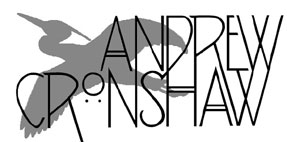
- Andrew Cronshaw website -
- Andrew Cronshaw MySpace -
- Cloud Valley Music website -
- Andrew Cronshaw website -
- Andrew Cronshaw MySpace -
- Back to Reviews Introduction page -
Written in
fRoots
issue 349, 2012
ELS BERROS DE LA CORT
Los NÚstres Vices e Pecats
Nufolk NF013 (2012)
POTIR
Gothic City
Sketis SKMR-089 (2012)
The playing of music from 14th-century European manuscripts is often the domain
of ensembles within the classical music world using reconstructed instruments,
or of jolly minstrelish be-tighted mock-medievalist combos. Both of these CDs
cut through that with something much grittier and involvingly immersive.
Els Berros De La Cort do dress up like extras from
Game Of Thrones - lots of leather, studs, feathers and bare torsos Ė but
they do it well, and given that theyíre at root a bunch of street performers
thatís a fair enough way of getting an audience. But when I saw them a couple of
albums ago doing a stage show at Manresa festival in their homeland of Catalunya
the actual musical material among the smoke and sweat theatricals was fairly
mainstream early-music, and the 2006 and 2008 CDs, while energetic and shouty,
didnít impress. But Iíd been told the new one is a step forward, and indeed it
is.
Actually, on the CD package thereís no dressing-up, in
fact there are no clothes. Itís full of grainy erotic photos, with a remarkably
unsettling anatomically ambiguous front cover shot. And recipes. It all relates
to the albumís theme of lust and gluttony, in which they draw on texts from 14th
century Catalan manuscripts, particularly the oldest preserved cookery treatise
Llibre De Sent Sovi and the sex manual Speculum Al Foder, setting
them to music largely derived and developed from the repertoires of the
12th-14thC Catalan and Occitan troubadours.
Theyíve certainly worked a lot on the actual music for
this one, in both material and treatment. Itís strong and interesting in melody,
playing and ingenious but natural in arrangement. Rather than historical
reconstructions, they play instruments that have long histories but are used
today in Catalan folk music: long tarota shawms and their smaller kin gralla,
both of which are lead instruments in a Catalan cobla, plus hurdy-gurdy and the
Catalan bagpipe sac de gemecs, with a through-flow of rhythmic propulsion,
driven by mandola or saz and underpinned by leathery drums, that gets inside the
tunes and doesnít resort to obvious beats and is hefty but without bombast.
The singing, male and female, at times harmonising
acapella, is direct and unaffected, without any pretensions to an imagined
Ďmedievalí sound. Sometimes the texts are spoken over the music, again
unpretentiously in natural voices. No medievalist exercise, itís music for
today, and succeeds in that with no overt modernising features that would date
it.
Potirís Gothic City, too, uses musical and
textual material from medieval Catalunya, particularly the 14th-century Llibre
Vermell De Montserrat, the Red Book Of Montserrat, which is still kept at the
monastery on the landmark jagged rock outcrop near Manresa.
The instruments Ė bagpipes, breathy flutes, whistles,
jewís-harp, psaltery, dutar, peasant lute, drums and other percussion Ė while
they have long histories are chosen primarily for their ability to create the
sound-picture rather than academic authenticity. And from the street-scene
hubbub, skirling bagpipes and resonant drumming of the opening track onwards
most of them are played by one person, and heís not from Catalunya, heís
Russian: Andrey Nazarov.
As well as a multi-instrumentalist, heís a graphic
artist, making rather fine drawings in broadly Albrecht DŁrer style territory,
and the album, in whose booklet a selection appear, was begun as a project to
make a musical panorama of the Middle Ages to go with them. So, unlike the Els
Berros album, it does aim to create a medieval sound, but itís no concert-hallish
thing; itís as alive with pictures and incidental sounds as a well-made film.
Hard as it is to believe (and Iím still wondering),
unless some are uncredited or some of the people listed under ďOur gratitude toĒ
pitched in, Nazarov seems to be doing all the varied singing and other voices
(though presumably not all in the crowd-scene hubbub), except for touches to
three tracks of equally right and un-artsy female vocals of an Arabic slant by
Razana Rustom. It sounds, as does his playing, like a whole bunch of different
people interacting in a real place. The fact that it must have taken a lot of
single-minded work in the studio never shows, and however it was done, it is
indeed remarkable tour-de-force making a vivid soundscape.
www.elsberrosdelacort.cat
www.sketismusic.ru
© 2012 Andrew Cronshaw
You're welcome to quote from reviews on this site, but please credit the writer
and fRoots.
Links:
fRoots - The feature and
review-packed UK-based monthly world roots music magazine in which these reviews
were published, and by whose permission they're reproduced here.
It's not practical to give, and keep up to date,
current contact details and sales sources for all the artists and labels in
these reviews, but try Googling for them, and where possible buy direct from the
artists.
CDRoots.com in the USA, run by
Cliff Furnald, is a reliable and independent online retail source, with reviews,
of many of the CDs in these reviews; it's connected to his excellent online magazine
Rootsworld.com
For more reviews click on the regions below
NORDIC
BALTIC
IBERIA (& islands)
CENTRAL & EASTERN EUROPE, & CAUCASUS
OTHER EUROPEAN AMERICAS OTHER, AND WORLD IN GENERAL
- Back to Reviews Introduction page -